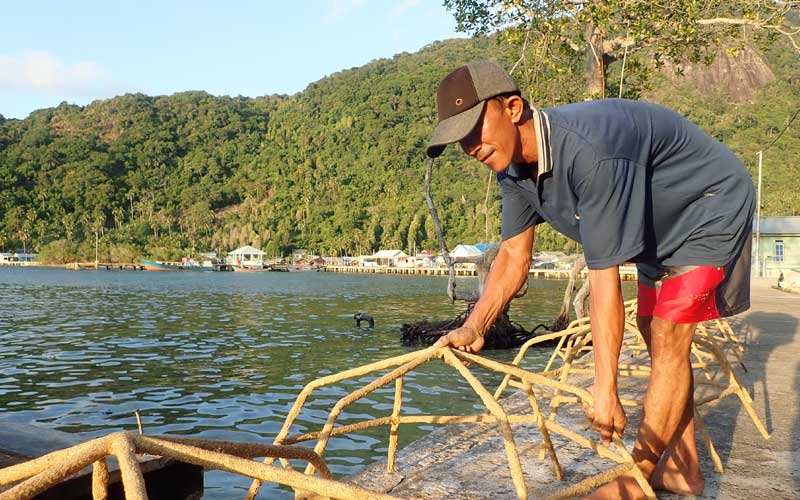The world’s coral reefs are under threat with 25% estimated to be beyond repair and another 66% under serious threat.
Years of unregulated and illegal fishing as well as global warming and marine debris have caused long-term and severe damage to the marine ecosystems in Anambas Islands.
Our top mission is to restore the coral reefs and create a healthy ecosystem around Kiabu and Bawah Reserve. To do this, AF set up a Reef Restoration Programme, installing artificial reefs in damaged areas and performing coral transplantations to regenerate the reefs and bring vital fish habitats back. AF has currently implemented two types of artificial reefs: Hexadomes and Coral Spiders. The artificial reefs are built using metal and concrete to provide a stable, strong, non-reactive base that will stand the test of time. By providing a stable structure the artificial reef affords protection from predators for reef fish and invertebrate populations and also provides somewhere for coral recruits to settle and grow. The shapes and designs of the structure also serve as protection for small and juvenile fish, as well as invertebrates. This keeps the reef healthy as these creatures tend to consume the algae that naturally grow on the structures.
Degraded reef habitats can be rehabilitated over large scales using the coral spider technique. A spider frame is relatively inexpensive to build, and light enough to easily transport and install on a reef. The open shape of these frames allows room for corals to grow and allows water to flow through the frame. This technique is especially useful for areas that have been damaged by blast fishing, anchor, or storm damage, where structural complexity has been lost.
References:
1. WWF Website
2. Coral Reef Alliance




